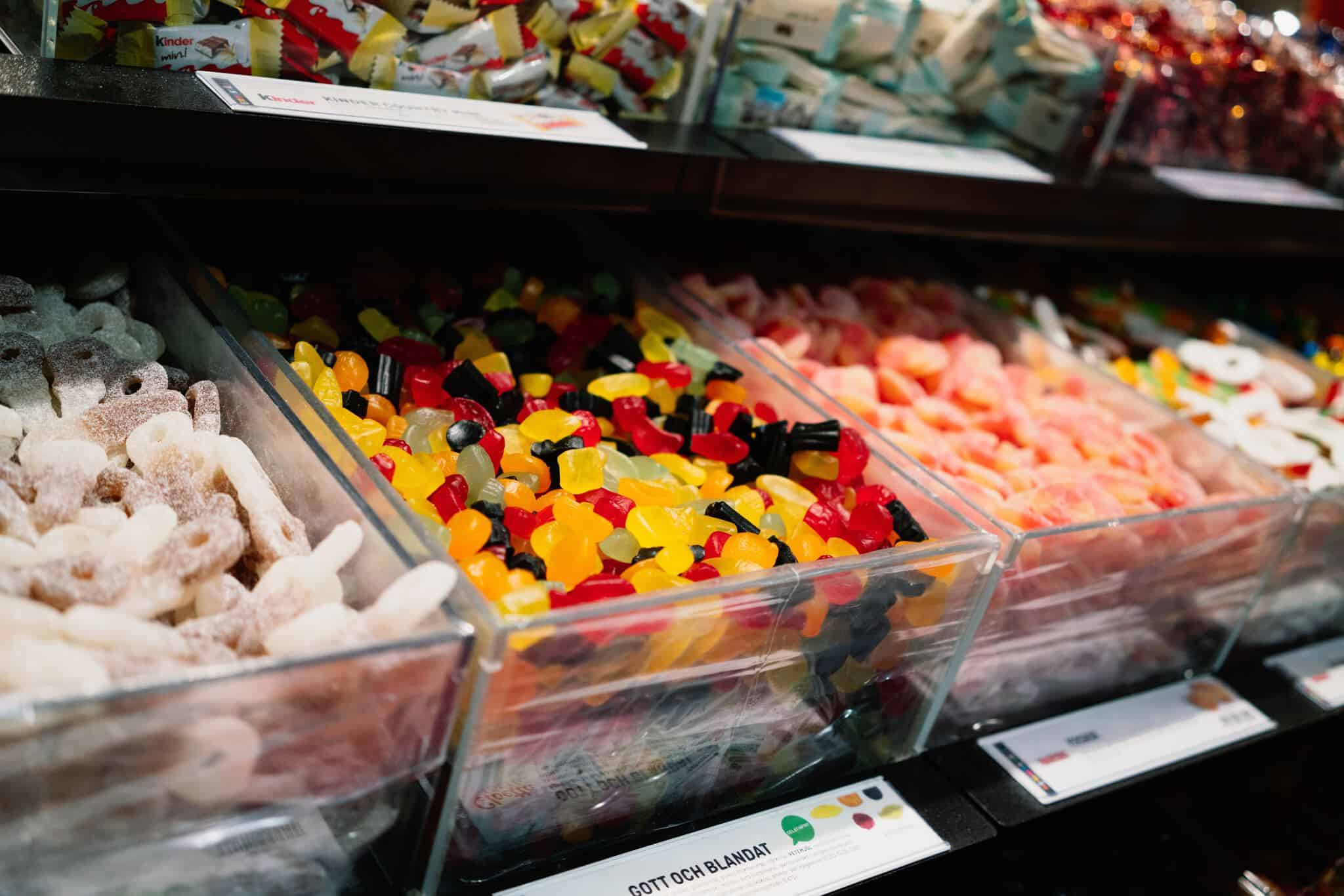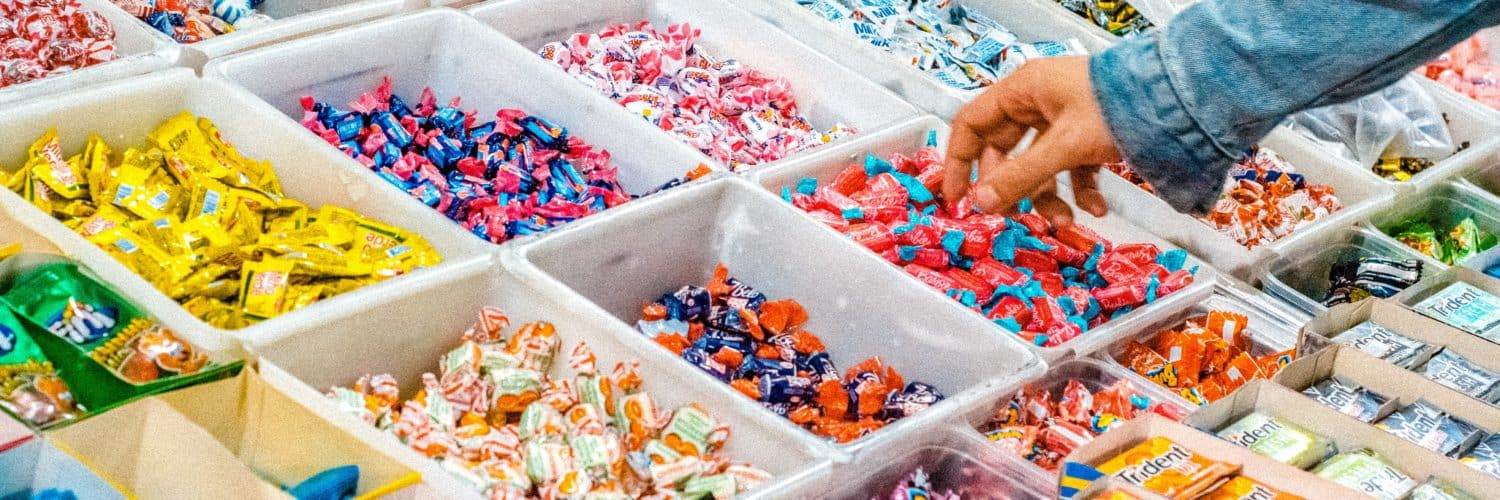From cookies to cakes and from scooping candy to the most delicious chocolates: Swedes love it! Sweden has a healthy image in one way or another. That will be because they are often out in the fresh air. Or by the crispbread and Lätta. But they really eat a lot of sweets. An average of 17 kilos per year. That is a world record, the average candy consumption in the EU is 7 kilos per year.
Saturday: Swedish candy day
Children grow up with the fact that every Saturday they receive a bag of sweets, the lördagsododis. Or better yet, they can fill their own bag themselves. Because Sweden prefers to eat loessgodis: loose candy. In every supermarket, rows of trays of scooping candy are strategically placed at the checkout. There are also many stores that specialize in selling as many types of candy as possible. A gas station along the highway can count on extra stops if there is a candy store with as many as 1000 kinds of scoop candy. In the office it is not uncommon for a bowl of candy at the coffee machine on Friday. It is then almost Saturday already anyway.

But why do the Swedes eat so much candy?
The big difference with other European countries is that adults also eat a lot of sweets. With us, that is mainly something for children and students. Adults may eat Autodrop en route, but they don’t have a bowl of candy on the table every Saturday night.
But why do sweden eat so much candy?
Sugar refining was discovered in the 17th century. Pharmacists throughout Europe sold candy sugar, a delicacy. Because of the price only reserved for the rich. In the 19th century, many sugar beets were grown in Sweden. Sugar became readily available in this way and therefore cheap. Sweets were affordable for everyone. Around the turn of the century there were already 100 candy factories in Sweden. 50 years later they found out that all that sweetness was really bad for your teeth. Then the lördagsgodis was introduced: from now on children were only allowed to eat sweets during the weekend. And it still is, for children and adults.
Last Updated on July 31, 2019




